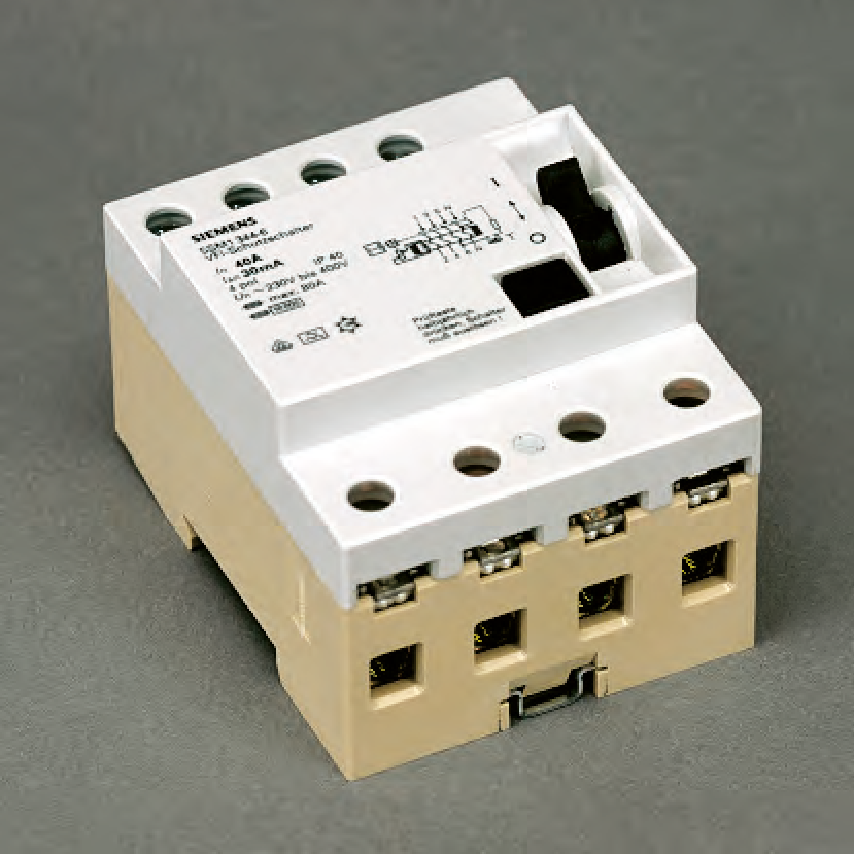If a conductor makes contact with the housing and a fault current larger than the nominal fault current flows through the protective conductor, an RCD will disconnect the consumer from the network.
Residual-current device (RCD, Trip switch)

According to luminaire regulation EN 60598-1, leakage currents of up to 3.5 mA per luminaire are permissible for fixed luminaires of safety class I in normal operation, regardless of their number of lamps; however 1 mA is rarely exceeded in practice. An inversion of mains connection lines can lead to increased leakage currents. Specifications on the mains connection terminal must therefore be observed. The possible number of connected luminaires per fault-current circuit breaker (FI breaker) is limited by its nominal fault current per outer conductor, e.g. If ≤ 30 mA. Fault-current circuit breakers may already release once fault currents exceed 50% of the nominal fault current according to DIN VDE 0664-1 "Residual current-operated protective devices" .
Accordingly, a 30 mA FI switch may react to a fault current of 15 mA. Therefore, a maximum of 15 luminaires per outer conductor or 45 luminaires in case of a three-phase FI switch should not be exceeded in this case.
When switching lighting installations on and off, there are inevitable current peaks. The recommendation is therefore to only use FI switches tested according to EN 61009-1 "Residual current operated circuit-breakers with integral overcurrent protection for household and similar uses (RCBOs). Part 1: General rules" for a surge current strength of 200 A.